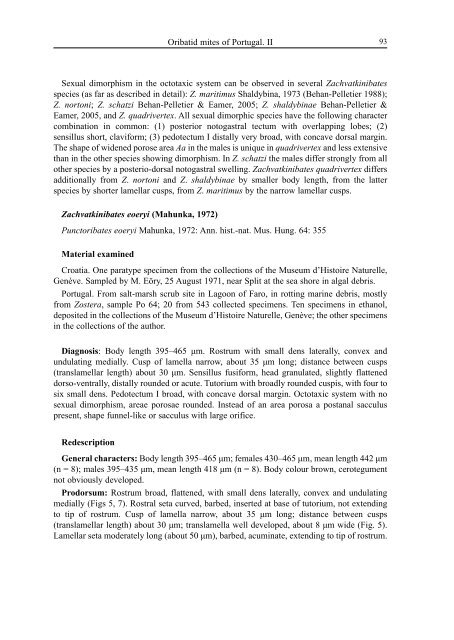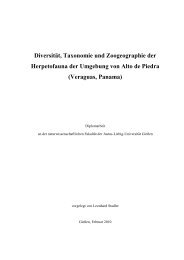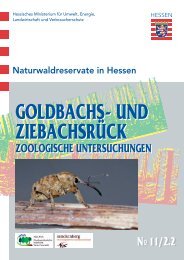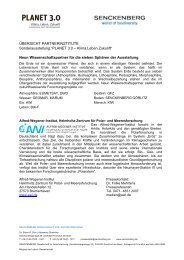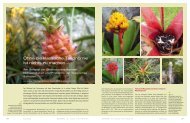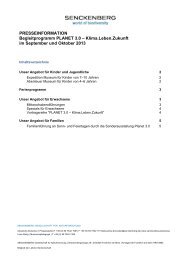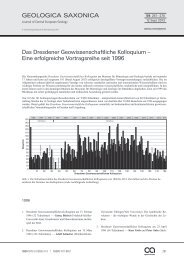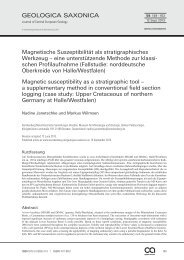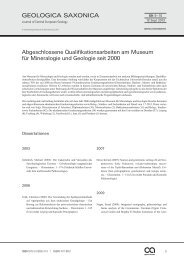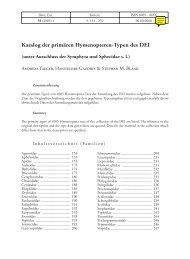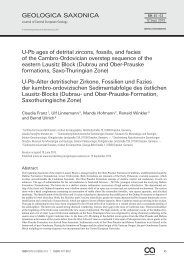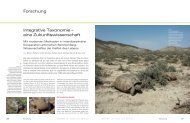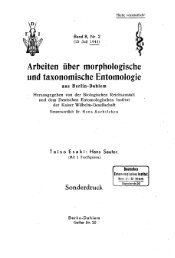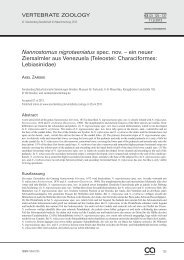Oribatid Mites (Acari: Oribatida) - Senckenberg
Oribatid Mites (Acari: Oribatida) - Senckenberg
Oribatid Mites (Acari: Oribatida) - Senckenberg
You also want an ePaper? Increase the reach of your titles
YUMPU automatically turns print PDFs into web optimized ePapers that Google loves.
<strong>Oribatid</strong> mites of Portugal. II 93<br />
Sexual dimorphism in the octotaxic system can be observed in several Zachvatkinibates<br />
species (as far as described in detail): Z. maritimus Shaldybina, 1973 (Behan-Pelletier 1988);<br />
Z. nortoni; Z. schatzi Behan-Pelletier & Eamer, 2005; Z. shaldybinae Behan-Pelletier &<br />
Eamer, 2005, and Z. quadrivertex. All sexual dimorphic species have the following character<br />
combination in common: (1) posterior notogastral tectum with overlapping lobes; (2)<br />
sensillus short, claviform; (3) pedotectum I distally very broad, with concave dorsal margin.<br />
The shape of widened porose area Aa in the males is unique in quadrivertex and less extensive<br />
than in the other species showing dimorphism. In Z. schatzi the males differ strongly from all<br />
other species by a posterio-dorsal notogastral swelling. Zachvatkinibates quadrivertex differs<br />
additionally from Z. nortoni and Z. shaldybinae by smaller body length, from the latter<br />
species by shorter lamellar cusps, from Z. maritimus by the narrow lamellar cusps.<br />
Zachvatkinibates eoeryi (Mahunka, 1972)<br />
Punctoribates eoeryi Mahunka, 1972: Ann. hist.-nat. Mus. Hung. 64: 355<br />
Material examined<br />
Croatia. One paratype specimen from the collections of the Museum d’Histoire Naturelle,<br />
Genève. Sampled by M. Eöry, 25 August 1971, near Split at the sea shore in algal debris.<br />
Portugal. From salt-marsh scrub site in Lagoon of Faro, in rotting marine debris, mostly<br />
from Zostera, sample Po 64; 20 from 543 collected specimens. Ten specimens in ethanol,<br />
deposited in the collections of the Museum d’Histoire Naturelle, Genève; the other specimens<br />
in the collections of the author.<br />
Diagnosis: Body length 395–465 µm. Rostrum with small dens laterally, convex and<br />
undulating medially. Cusp of lamella narrow, about 35 µm long; distance between cusps<br />
(translamellar length) about 30 µm. Sensillus fusiform, head granulated, slightly flattened<br />
dorso-ventrally, distally rounded or acute. Tutorium with broadly rounded cuspis, with four to<br />
six small dens. Pedotectum I broad, with concave dorsal margin. Octotaxic system with no<br />
sexual dimorphism, areae porosae rounded. Instead of an area porosa a postanal sacculus<br />
present, shape funnel-like or sacculus with large orifice.<br />
Redescription<br />
General characters: Body length 395–465 µm; females 430–465 µm, mean length 442 µm<br />
(n = 8); males 395–435 µm, mean length 418 µm (n = 8). Body colour brown, cerotegument<br />
not obviously developed.<br />
Prodorsum: Rostrum broad, flattened, with small dens laterally, convex and undulating<br />
medially (Figs 5, 7). Rostral seta curved, barbed, inserted at base of tutorium, not extending<br />
to tip of rostrum. Cusp of lamella narrow, about 35 µm long; distance between cusps<br />
(translamellar length) about 30 µm; translamella well developed, about 8 µm wide (Fig. 5).<br />
Lamellar seta moderately long (about 50 µm), barbed, acuminate, extending to tip of rostrum.


